#bharatiya
Text

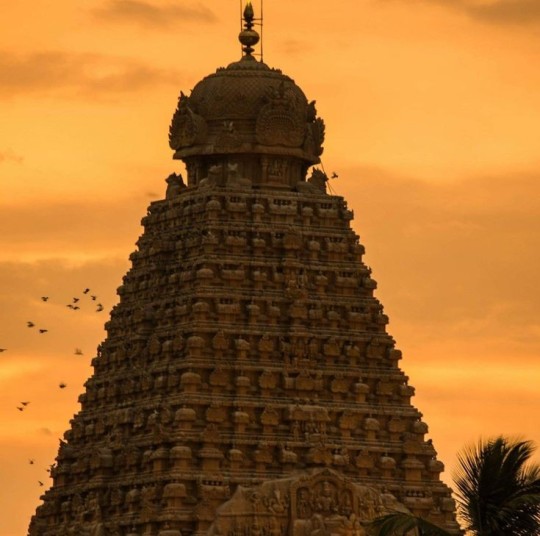
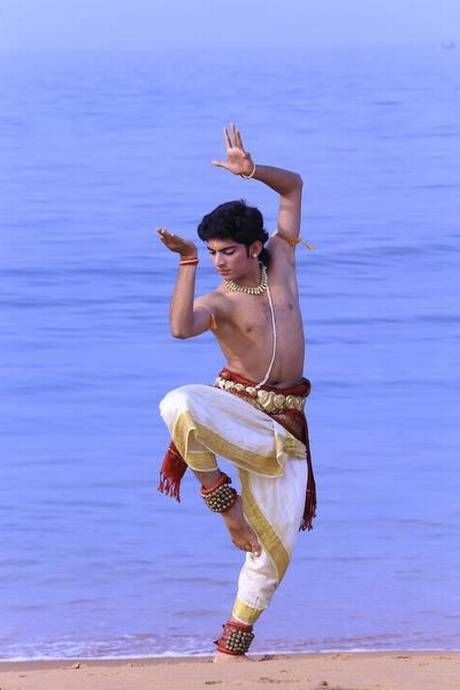


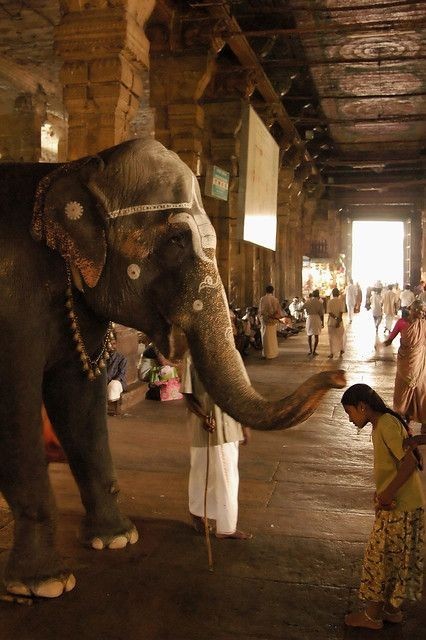


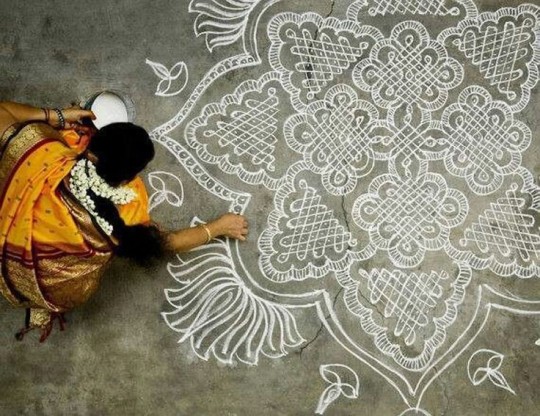

கொங்கு தேர் வாழ்க்கை அம் சிறைத் தும்பி,
காமம் செப்பாது கண்டது மொழிமோ
பயிலியது கெழீஇய நட்பின் மயில் இயல்
செறி எயிற்று அரிவை கூந்தலின்
நறியவும் உளவோ நீ அறியும் பூவே?
Translation: oh honey bee bearing beautiful wings and who extracts the honey from the best of the best flowers, please tell me the truth. Do you know any flower with a fragrance better than the hair of the peacock like beautiful woman whom I love?
#a 'desi' moodboard#everytime i see anything tagged as desi aesthetic it is exclusively northern india aesthetic#or delhi/punjabi aesthetic tbh#so heres for my mutuals from the southern region of india#as desi as it gets#desiblr#tamizh#bharatiya#தமிழ்பளர்
102 notes
·
View notes
Text
𝐖𝐞 𝐒𝐮𝐩𝐩𝐨𝐫𝐭 "𝐁𝐇𝐀𝐑𝐀𝐓"
🇮🇳 Supporting the Spirit of BHARAT 🇮🇳
In unity, we find strength. Together, we are unstoppable. Let's stand by our beloved BHARAT in every triumph and challenge. 🌟🤝
Today, we salute the resilience, diversity, and unwavering spirit of our incredible nation. 🙏❤️
#SupportBHARAT#UnityInDiversity#Proudbharat#TogetherWeRise#IncredibleIndia#indiatobharat#bharath#onlybharat#bharatiya#support
0 notes
Text
CAUTION: OPINIONATED GENERALIZATION
∆ Family of Dharmics .
In One Phrase:
Sanatani 🕉️
> Know Eternal. Be Eternal...
Hindu 🛡️
> Know Thy Enemy. Engage...
Indian 🤑
> Develop Yourself. Get Validated...
Bharatiya 🙏🏾
> Live Yours. Let Us Live Ours...
.•°•.
→ Sanatani are Hermits at Best & Householders at Worst.
→ Hindus are Collectivists at Best & Individualists at Worst.
→ Indians are Individualists at Best & Collectivists at Worst.
→ Bharatiya are Householders at Best & Hermits at Worst.
===============================
Dharma = For Others
Artha = For Yours
Kama = For You
Moksha = For THAT
===============================
***P₹io₹ities***
Sanatani: M | D || K | A
Hindu: D | A || M | K
Indian: K | A || M | D
Bharatiya: A | K || D | M
.•°•.
Symbolically:
SANATANI
Saraswati: Wisdom
Brahmana: Expander
Vishnu: Sustainer
HINDU
Durga: Protection
Kshatriya: Defender
Yama: Decider
INDIAN
Lakshmi: Abundance
Vaishya: Trader
Indra: Evaluator
BHARATIYA
Shakti: Energy
Shudra: Worker
Shiva: Harmonizer
#sanatani#Hindu#indian#Bharatiya#Hermit#householders#individualists#collectivists#dharma#artha#kama#moksha
0 notes
Photo

#Bharatiya Janata Party #farmers #member # Assembly Constituency #Dr. Sanjay Kute 💼 Connect With Us : *अभ्युदय पाईल्स & स्किन, हेअर & कॉस्मेटिक लेझर स्त्रीरोग सेंटर* 📦 Our Services : Laser Treatment for Piles,Fissure,Pilonidal Sinus,stress Urinary Incontinence,Cosmetic Gynaecology, Fistula in Ano,Skin,PRP Treatment, Tattoo Removal, Obesity, Permanent Hair Removal 📞 Call : 9970743318 🏬 Walk In : डॉ. प्रवीण सहावे(अध्यक्ष ),डॉ.पूजा सहावे(उपाध्यक्ष )पुण्यश्लोक अहिल्यादेवी युवा मंच, नागपूर,मनीष नगर व रामेश्वरी चौक, नागपूर 🌐 Website : www.pilesfistulacure.com (at Abhyudaya Piles Laser Hospital) https://www.instagram.com/p/Cpjn-IzNbgm/?igshid=NGJjMDIxMWI=
0 notes
Text
definitely a longer piece so these excerpts are far from showcasing everything this piece has to offer! read the whole thing on your own time, and in general, just check out jewish currents, an educational, leftist, anti-zionist jewish magazine!
Every August, the township of Edison, New Jersey—where one in five residents is of Indian origin—holds a parade to celebrate India’s Independence Day. In 2022, a long line of floats rolled through the streets, decked out in images of Hindu deities and colorful advertisements for local businesses. People cheered from the sidelines or joined the cavalcade, dancing to pulsing Bollywood music. In the middle of the procession came another kind of vehicle: A wheel loader, which looks like a small bulldozer, rumbled along the route bearing an image of Indian Prime Minister Narendra Modi aloft in its bucket.
For South Asian Muslims, the meaning of the addition was hard to miss. A few months earlier, during the month of Ramadan, Indian government officials had sent bulldozers into Delhi’s Muslim neighborhoods, where they damaged a mosque and leveled homes and storefronts. The Washington Post called the bulldozer “a polarizing symbol of state power under Narendra Modi,” whose ruling Bharatiya Janata Party (BJP) is increasingly enacting a program of Hindu supremacy and Muslim subjugation. In the weeks after the parade, one Muslim resident of Edison, who is of Indian origin, told The New York Times that he understood the bulldozer much as Jews would a swastika or Black Americans would a Klansman’s hood. Its inclusion underscored the parade’s other nods to the ideology known as Hindutva, which seeks to transform India into an ethnonationalist Hindu state. The event’s grand marshal was the BJP’s national spokesperson, Sambit Patra, who flew in from India. Other invitees were affiliated with the Hindu Swayamsevak Sangh (HSS), the international arm of the Hindu nationalist paramilitary force Rashtriya Swayamsevak Sangh (RSS), of which Modi is a longtime member.
...
On December 6th, 1992, a mob of 150,000 Hindus, many of whom were affiliated with the paramilitary group the RSS, gathered at the Babri Masjid, a centuries-old mosque that is one of the most contested sacred sites in the world. Over the preceding century, far-right Hindus had claimed that the mosque, located in the North Indian city of Ayodhya, was built not only upon the site where the Hindu deity Ram was born but atop the foundations of a demolished Hindu temple. The RSS and its affiliates had been campaigning to, in the words of a BJP minister, correct the “historical mistake” of the mosque’s existence, a task the mob completed that December afternoon. “They climbed on top of the domes and tombs,” one witness told NPR. “They were carrying hammers and these three-pronged spears from Hindu scripture. They started hacking at the mosque. By night, it was destroyed.” The demolition sparked riots that lasted months and killed an estimated 2,000 people across the country.
The destruction of the Babri Masjid was arguably Hindu nationalism’s greatest triumph to date. Since its establishment in 1925, the RSS—whose founders sought what one of them called a “military regeneration of the Hindus,” inspired by Mussolini’s Black Shirts and Nazi “race pride”—had been a marginal presence in India: Its members held no elected office, and it was temporarily designated a terrorist organization after one of its affiliates shot and killed Mohandas Gandhi in 1948. But the leveling of the Babri Masjid activated a virulently ethnonationalist base and paved the way for three decades of Hindutva ascendance. In 1998, the BJP formed a government for the first time; in 2014, it returned to power, winning a staggering 282 out of 543 seats in parliament and propelling Modi into India’s highest office. Since then, journalist Samanth Subramanian notes, all of the country’s governmental and civil society institutions “have been pressured to fall in line” with a Hindutva agenda—a phenomenon on full display in 2019, when the Supreme Court of India awarded the land where the Babri Masjid once stood to a government run by the very Hindu nationalists who illegally destroyed it. (Modi has since laid a foundation stone for a new Ram temple in Ayodhya, an event that a prominent RSS activist celebrated with a billboard in Times Square.) The Ayodhya verdict came in the same year that Modi stripped constitutional protections from residents of the Muslim-majority region of Kashmir and passed a law that creates a fast track to citizenship for non-Muslim immigrants, laying the groundwork for a religious test for Indian nationality. Under Modi, “the Hinduization of India is almost complete,” as journalist Yasmeen Serhan has written in The Atlantic.
To achieve its goals, the RSS has worked via a dense network of organizations that call themselves the “Sangh Parivar” (“joint family”) of Hindu nationalism. The BJP, which holds more seats in the Indian parliament than every other party combined, is the Sangh’s electoral face. The Vishwa Hindu Parishad (VHP) is the movement’s cultural wing, responsible for “Hinduizing” Indian society at the grassroots level. The Bajrang Dal is the project’s militant arm, which enforces Hindu supremacy through violence. Dozens of other organizations contribute money and platforms to the Sangh. The sheer number of groups affords the Sangh what human rights activist Pranay Somayajula has referred to as a “tactical politics of plausible deniability,” in which the many degrees of separation between the governing elements and their vigilante partners shields the former from backlash. This explains how, until 2018, the CIA could describe the VHP and Bajrang Dal as “militant religious organizations”—a designation that applies to non-electoral groups exerting political pressure—even as successive US governments have maintained a warm relationship with their parliamentary counterpart, the BJP.
...
The most extreme figures in the Hindu nationalist and Zionist movements were especially frank about the nature of their partnership: “Whether you call them Palestinians, Afghans, or Pakistanis, the root of the problem for Hindus and Jews is Islam,” Bajrang Dal affiliate Rohit Vyasmaan told The New York Times of his friendly relationship with Mike Guzofsky, a member of a violent militant group connected to the infamous Jewish supremacist Meir Kahane’s Kach Party.
...
In 2003, Gary Ackerman—a Jewish former congressman who was awarded India’s third-highest civilian honor for helping to found the Congressional Caucus on India—told a gathering of AJC and AIPAC representatives and their Indian counterparts that “Israel [is] surrounded by 120 million Muslims,” while “India has 120 million [within].” Tom Lantos, another Jewish member of the caucus, likewise enjoined the two communities to collaborate: “We are drawn together by mindless, vicious, fanatic, Islamic terrorism.”
#reaux speaks#hindutva#nationalism#islam#religion#india#narendra modi#south asia#muslim#new jersey#Bharatiya Janata Party#history#resources#jewish currents#anti zionism#palestine#islamophobia#afghanistan#hindu#jewish#free palestine#israel
160 notes
·
View notes
Note
narendra modi kys prayer circle
🕯️🕯️🕯️🕯️🕯️🪔🪔🕯️🕯️🕯️🕯️🕯️
🕯️modi dies before the elections🕯️
🕯️🕯️🕯️🕯️🕯️🪔🪔🕯️🕯️🕯️🕯️🕯️
#please god let this look normal on mobile#asking moi#look i put some diyas in there too i am so accepting of my Bharatiya Sanskriti why do rhysaka and hindulivesmatter hate me sm 😔#unblock me cowards i wanna study you
30 notes
·
View notes
Text
Zack Beauchamp at Vox:
I met Raqib Naik, a journalist who had fled his native India, at a coffee shop in suburban Maryland. We sat at the same metal table where he once discussed the prospect of his assassination with FBI agents.
Naik is a Muslim from Jammu and Kashmir, India’s only Muslim-majority state. In August 2019, Prime Minister Narendra Modi revoked the state’s longstanding self-determination rights and temporarily imposed martial law. Indian officials arbitrarily detained thousands of Kashmiris, including many journalists. Through it all, Naik did his best to convey the reality in Kashmir to the outside world — a firsthand account of what was really going on in what’s often termed “the world’s largest democracy.”
On August 15, 10 days after the crackdown in Kashmir began, Naik received the first of three visits from Indian military intelligence officers who interrogated him about his reporting. The harassment forced him underground; he eventually fled to the United States in the summer of 2020.
But Modi wouldn’t let him go that easily.
In September 2020, an Indian military official sent Naik a message saying “i have invited your father for a cup of tea.” In November 2020, a second intelligence officer said he too had contacted Naik’s father, vowing that he and Naik would “meet in person” even though Naik had moved to America. While traveling in another country in June 2022, Naik received an anonymous text message saying “you are being tracked and will be prosecuted.” He flew back to the US as quickly as possible.
[...]
India’s plot against America
I have spent the past several months investigating stories like Naik’s: critics of India who say the Indian government has reached across the Pacific Ocean to harass them on American soil.
Interviews with political figures, experts, and activists revealed a sustained campaign where Narendra Modi’s government threatens American citizens and permanent residents who dare speak out on the declining state of the country’s democracy. This campaign has not been described publicly until now because many people in the community — even prominent ones — are too afraid to talk about it. (The Indian government did not respond to repeated and detailed requests for comment.)
India’s efforts include a handful of high-profile incidents, most notably an assassination plot against American and Canadian activists. But more commonly, India engages in subtle forms of harassment that fly under the public radar.
An American charity leader who spoke out on Indian human rights violations saw his Indian employees arrested en masse. An American journalist who worked on a documentary about India was put on a travel blacklist and deported. An American historian who studies 17th-century India received so many death threats that she could no longer speak without security. Even a member of Congress — and vocal critic of the Modi regime — said she was concerned about being banned from visiting her Indian parents.
[...]
And while Russian involvement in the 2016 election swayed few votes, there’s good reason to believe India’s campaign is working as intended — muting stateside criticism of India’s autocratic turn under Modi and his Bharatiya Janata Party (BJP).
An American academic warned me that they couldn’t speak openly about India out of concern for family. An American think tank expert described numerous examples of censorship and self-censorship at prominent US institutions. These two sources, and many others, would only share their personal stories with me anonymously. All were concerned about the consequences for their careers, their loved ones, or even themselves — and they weren’t alone.
“Indian Americans who are against the BJP, or oppose the BJP, have been intimidated and as a result routinely engage in self-censorship. I have heard them say as much to me,” says John Sifton, the Asia advocacy director at Human Rights Watch. “There are prominent Indian American intellectuals, writers, [and] celebrities who simply will not speak out against Modi because they are afraid that by doing so they will subject themselves to a torrent of online abuse and even death threats.”
As a result, one of the most important developments of our time — Modi pushing the world’s largest democracy toward an authoritarian future — is receiving far less scrutiny in the United States than it should, especially at a time when Modi is running for a historic third term.
India’s willingness to go after critics outside its borders — a practice political scientists call “transnational repression” — is a symptom of this democratic decline.
Most sources told me that Indian harassment of Americans began in earnest after Modi took office in 2014, with most reported incidents happening in the past several years (when the prime minister became more aggressively authoritarian at home). Modi, a member of a prominent Hindu supremacist group since he was 8 years old, seems to believe he can act on the world stage in the same way he behaves at home.
Despite the brazenness of India’s campaign — attacking Americans at home in a way that only the world’s worst authoritarian governments would dare — the Biden administration is putting little pressure on Modi to change his ways. Judging New Delhi too important in the fight against China, the US government has adopted its own unstated policy of avoiding fights with India over human rights and democracy.
[...]
Modi’s “new India”
India was founded in 1947 as a secular democracy, with formal equality of all citizens enshrined in its constitution. But even before then, the Rashtriya Swayamsevak Sangh (RSS) had begun laying the groundwork for an alternative Hindu nationalist state. Narendra Modi has been a part of this fight since 1958, when he first got involved in his town’s RSS branch.
The RSS’s ideology, called Hindutva, holds that India must be a state principally for Hindus. It treats non-Hindus, especially Muslims, as foreign imports at best and invading forces at worst. The BJP is the RSS’s political wing, and it has worked extensively to bring the Indian state in line with Hindutva principles.
Making this dream into reality has been the purpose of Modi’s political career. Since becoming prime minister, he’s proven remarkably adept at it. The revocation of Kashmir’s autonomous status, and the subsequent crackdown that swept up Raqib Naik, is just one of many Hindutva victories during his tenure.
His government recently inaugurated a major new Hindu temple in the city of Ayodhya, on the site of a mosque that was torn down by an RSS-aligned mob in 1992. It passed the Citizenship Amendment Act, a law that, among other things, set up discriminatory immigration rules for Muslims. In states across the country, local BJP governments have passed laws restricting interfaith marriage between Hindus and Muslims.
Vox exposes India’s siccing of Americans critical of its authoritarian turn under PM Narendra Modi.
#India#US/India Relations#United States#Narendra Modi#Hindutva#Islamophobia#Bharatiya Janata Party#Rashtriya Swayamsevak Sangh
7 notes
·
View notes
Text
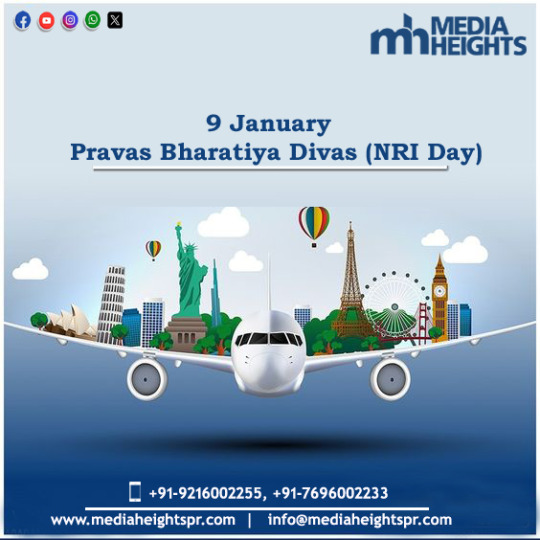
Pravasi Bharatiya Divas is a celebratory day observed on 9 January by the Republic of India to mark the contribution of the Overseas Indian community towards the development of India. The day commemorates the return of Mahatma Gandhi from South Africa to Mumbai on 9 January 1915.
#pravasibharatiyadiwas #bhartiyadivas Build your brand with digital media & take the benefits of social media branding contact Media Heights. By Mediaheightspr.com
#Digitalbranding #MEDIAHEIGHTS #advertisingagency #web #MEDIAHEIGHTSPRCOM #best #public #relation #agency #in #chandigarh #mohali #punjab #north #india #digitalmarketingcompany #searchengineoptimization #content #instagrammarketing #buildingrelationships #globally #customer #internetbanding — at media heights #smo #branding #facebook #twitter #marketingonline #brand #searchengineoptimization #internetmarketing #follow #digitalagency #marketingagency #motivation #digitalmarketingtips #onlinebusiness #websitedesign #marketingonline #brand #searchengineoptimization #content #instagrammarketing #advertisingagency #web #technology #onlinebranding #branding360degree #SEO #SEObrandingagency #websiteranking #websitetrafic #Digitalmarketing #mediaheights #OnlineAdvertising #instagrammarketing #advertisingagency #web #marketingonline #brand
#Pravasi Bharatiya Divas is a celebratory day observed on 9 January by the Republic of India to mark the contribution of the Overseas Indian#pravasibharatiyadiwas#bhartiyadivas Build your brand with digital media & take the benefits of social media branding contact Media Heights. By Mediaheightspr.c#Digitalbranding#MEDIAHEIGHTS#advertisingagency#web#MEDIAHEIGHTSPRCOM#best#public#relation#agency#in#chandigarh#mohali#punjab#north#india#digitalmarketingcompany#searchengineoptimization#content#instagrammarketing#buildingrelationships#globally#customer#internetbanding — at media heights#smo#branding#facebook#twitter
3 notes
·
View notes
Text
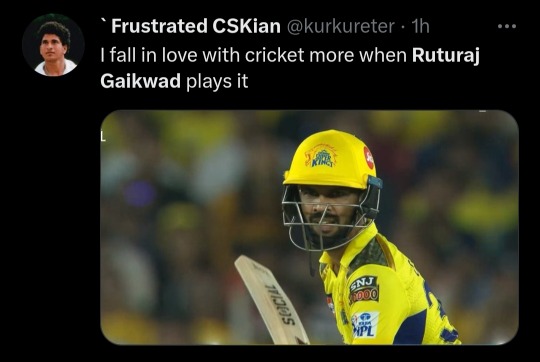
me
#what an innings bhai YEH hai bhavishya bharatiya bat ball ka#could have said cricket#but merko alliteration karna tha#ipl#ipl23#csk#cskdc#desi#desi core#desiblr#ruturajgaikwad#cricket
10 notes
·
View notes
Photo
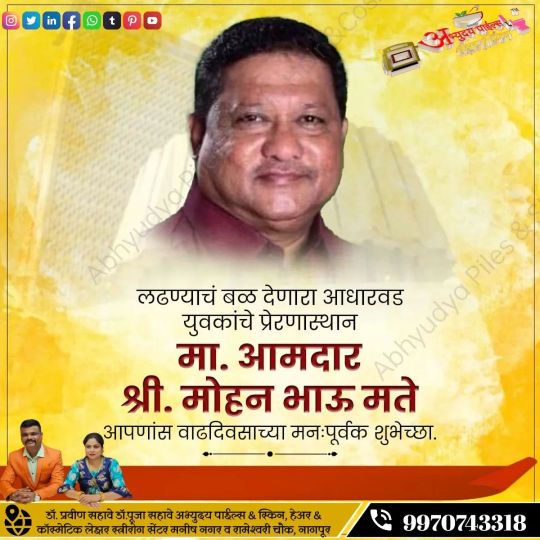
#Indian #politician #Bharatiya #Janata #Party #members #Maharashtra #Assembly#Mohan mate ji (at Abhyudaya Piles Laser Hospital) https://www.instagram.com/p/CmtskZENTW1/?igshid=NGJjMDIxMWI=
0 notes
Text
Jugal Sharma bags Jammu seat for third time; credits victory to people, PM Modi
JAMMU — Sitting MP Jugal Kishore Sharma retained his seat and secured a third consecutive victory in the Jammu Lok Sabha seat. He attributed his success to people and Prime Minister Narendra Modi.
Sharma, who has been an MP since 2014, received 6,87,588 votes, defeating his closest competitor Raman Bhalla, Jammu and Kashmir Congress vice president, by a margin of 1,35,498 votes.
Bhalla, who had…
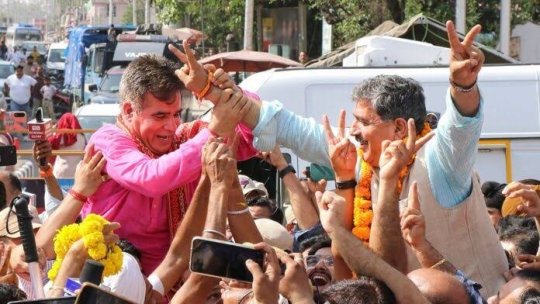
View On WordPress
#Bharatiya Janata Party (BJP)#Jammu Lok Sabha Seat#Jugal Kishore Sharma#Lok Sabha Election#Lok Sabha Election Result
0 notes
Text
The Indian Stock Markets and General Elections: Analyzing the Reactions in 2004, 2009, 2014, and 2019
The Indian stock markets, like their counterparts around the globe, are significantly influenced by political events, with elections being one of the most critical.
The general elections in India not only determine the political leadership but also set the tone for economic policies and reforms that can impact investor sentiment and market performance.
This article delves into the reactions of…
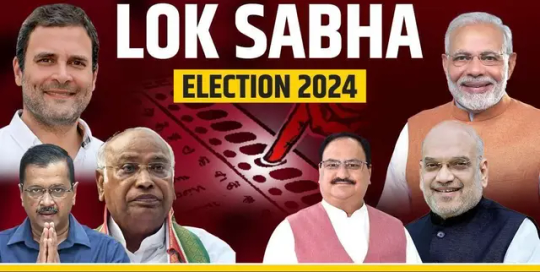
View On WordPress
#2004 general election#2009 general election#2014 general election#2019 general election#Bharatiya Janata Party (BJP)#Business-friendly environment#Economic growth#Economic policies#Economic reforms#Election mandates#Election results#financial crisis#Fiscal policies#General elections#Indian National Congress (INC)#Indian Stock Markets#Investor sentiment#Market performance#Market reaction#Market Volatility#Monetary easing#National Democratic Alliance (NDA)#Policy continuity#Political events and markets#Political stability#Post-election reaction#Pre-election scenario#Sensex#Stock market trends#United Progressive Alliance (UPA)
1 note
·
View note
Text
Lok Sabha Election Jharkhhand : फिर से BJP सरकार बनी तो ये संविधान बदल देंगे : प्रियंका गांधी
Ranchi: कांग्रेस महासचिव प्रियंका गांधी ने बुधवार को रांची और गोड्डा में चुनावी सभाओं को संबोधित करते हुए केंद्र सरकार और भारतीय जनता पार्टी पर जोरदार प्रहार किया। उन्होंने कहा कि अगर फिर से केंद्र में मोदी सरकार बनी तो वह देश का संविधान बदल देगी। आरक्षण की व्यवस्था खत्म हो जाएगी। ये इसलिए 400 सीटें मांग रहे हैं।
उन्होंने केंद्र की सरकार को बेरोजगारी और महंगाई के मोर्चे पर फेल बताया। प्रियंका…
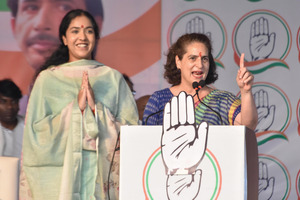
View On WordPress
#Bharatiya Janata Party#Congress General Secretary Priyanka Gandhi#strongly attacked the Central Government#while addressing election meetings in Ranchi and Godda
0 notes
Text
Here's a brief overview of the Bharatiya Nyaya Sanhita
" bharatiya nyaya sanhita 2023 pdf," often translated as the "Indian Penal Code" (IPC), is a significant legal document that forms the backbone of the Indian legal system. Enacted in 1860 during British colonial rule, the IPC continues to serve as the primary criminal code in India, guiding the prosecution and adjudication of criminal offenses across the country. Here's a brief overview of the Bharatiya Nyaya Sanhita:
Historical Context:

The IPC was drafted by the first Law Commission of India headed by Lord Thomas Babington Macaulay. Its enactment aimed to consolidate and codify the diverse criminal laws prevalent in different regions of British India into a unified legal framework. The IPC came into effect on January 1, 1862, and has since undergone amendments to reflect societal changes and legal developments.
Structure and Content:
The IPC consists of 511 sections divided into 23 chapters, covering a wide range of criminal offenses, penalties, and procedures. It delineates various offenses, such as homicide, theft, fraud, assault, sexual offenses, and offenses against the state. Each offense is defined, and corresponding penalties are prescribed based on the severity and nature of the crime.
Principles and Provisions:
The IPC embodies fundamental legal principles, including the presumption of innocence, the burden of proof, and the right to a fair trial. It outlines the elements of criminal liability, defenses available to accused persons, and procedures for investigation, arrest, trial, and appeal. Additionally, the IPC addresses issues related to jurisdiction, extradition, and the administration of justice.
Significance and Application:
The IPC plays a pivotal role in maintaining law and order, ensuring justice, and safeguarding the rights and liberties of individuals in India. It serves as a comprehensive legal framework for prosecuting criminal offenses, guiding law enforcement agencies, courts, and legal practitioners in their pursuit of justice. The IPC's applicability extends to the entire territory of India, subject to certain exceptions and modifications in specific regions or contexts.
Evolving Interpretations and Amendments:
Over the years, the IPC has witnessed numerous judicial interpretations, landmark judgments, and legislative amendments aimed at addressing emerging challenges and ensuring the relevance of criminal law in contemporary society. Amendments to the IPC have introduced new offenses, enhanced penalties, and incorporated provisions to address evolving forms of crime, such as cybercrime and terrorism.
Criticisms and Controversies:
While the IPC has served as a cornerstone of the Indian legal system, it has also faced criticism for certain provisions perceived as outdated, ambiguous, or discriminatory. Debates continue regarding the need for reforms to align the IPC with evolving societal norms, principles of justice, and human rights standards, particularly concerning issues such as gender-based violence, privacy rights, and freedom of expression.
In conclusion, the Bharatiya Nyaya Sanhita, or Indian Penal Code, stands as a foundational legal document that shapes the administration of criminal justice in India. Its provisions, principles, and interpretations reflect the complexities of Indian society and the ongoing quest for fairness, equality, and the rule of law.
For more info. Visit us:
Top of Form
0 notes
Text
वर्तमान शिक्षा व्यवस्था चुनौती और समाधान
शिक्षा किसी भी देश के लिए सबसे ज्यादा आवश्यक तत्वों में से एक है। प्राचीनकाल से भारतीय शिक्षा के विषय में मान्यता रही है कि यह व्यक्ति को न सिर्फ बुद्धिमान, विवेकशील, समझदार, नैतिक, न्यायप्रिय, निष्पक्ष, दयालु, संवेदनशील बनाती है बल्कि रुढ़िवादी परम्पराओं से मुक्त एक प्रबुद्ध नागरिक भी बनाती है। हमारी शिक्षा का उद्देश्य हमेशा से यही रहा है कि वह अज्ञानता से मुक्ति और स्वार्थपरता से छुटकारा दिलाये। सदियों से ऐसी ही शिक्षा पद्धति से शिक्षित समूह मिलकर एक शिक्षित समाज की रचना करते रहे हैं जो देश को उन्नत और समृद्ध बनाने में हमेशा से अपनी महत्वपूर्ण भूमिका निभाता चला आया है।
0 notes